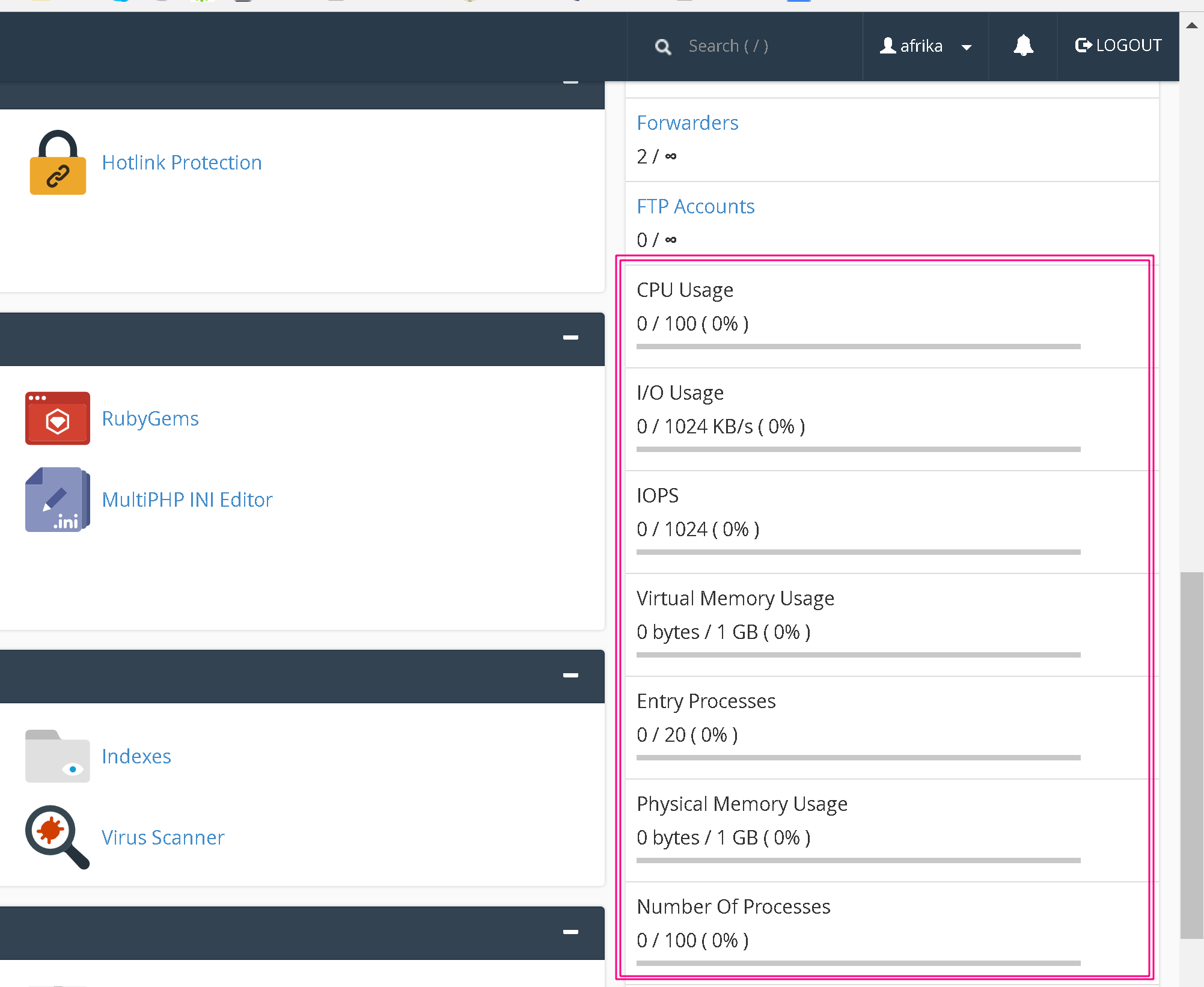Live Chat Software by Kayako |
|
Error 500/503/508 - CloudLinux Resource Limit Is Reached Errors and How to Fix Them
Posted by SkyNetHosting.Net Inc., Last modified by Sufya F on 03 May 2023 09:46 AM
|
|
|
This article discusses how Cloud Linux monitors and regulates resource usage on shared and reseller hosting servers to improve performance, stability and uptime. CloudLinux is an operating system that includes many features for optimizing shared hosting servers. Because shared and reseller servers host many accounts, an account using too many resources can lead to problems on the entire server. CloudLinux helps prevent these types of problems by actively monitoring resource usage, and proactively limiting accounts when they exceed predefined resource usage limits. CloudLinux Limit Types and Related Errors SPEED Limits (CPU Limit): If your cPanel account's CPU usage exceeds predefined limits, Cloud Linux slows it down to acceptable limits. Your site remains available during this time. When CPU usage falls below the maximum limit, CloudLinux stops limiting your site. DDoS (Distributed Denial of Service), spambot, and brute force attacks are all possible causes of high CPU usage. A poorly configured site can also cause this limit to be reached. To determine your account's current SPEED/CPU usage, log into cPanel. On the cPanel home screen, under Stats, locate CPU Usage.
Disk IO Throughput (IO/IOPS): If disk usage exceeds predefined limits, CloudLinux slows down your site to bring it back within acceptable limits. Your site remains available during this time. Memory Limit (PMEM/VMEM): CloudLinux monitors your account's virtual and physical memory usage. If memory usage exceeds predefined limits, visitors to your site receive “500 Internal Server Error” or “503 Error” messages in their web browser. Additionally, CloudLinux slows down your site to bring it back within acceptable limits. To determine your account's current memory usage, log into cPanel. On the cPanel home screen, under Stats, locate Virtual Memory Usage and Physical Memory Usage. Process usage Limit (PMEM): CloudLinux monitors the number of processes running on your account. HTTP, SSH, CGI, and PHP connection requests all count towards this predefined limit, which is generous. If your web site exceeds this limit, visitors receive “503 Error” messages in their web browser. The limit is primarily in place to help prevent DDoS, spambot, and brute force attacks from affecting entire servers. However, a poorly configured site can also cause this limit to be reached. To determine your account's current process usage, log in to cPanel. On the cPanel home screen, under Stats, locate Entry Processes. Primary Reasons for These Above Errors: Comment spamming: When spambots finds an outdated CMS such as wordpress or a web form, massive simultaneous connections are opened to fill the website with spam advertisements. Since such comment spamming is automated, multiple simultaneous connections are opened from different IPs. This exhausts the “Entry Process limit” and renders the website inaccessible with 508 error. Brute force hack attempts: A popular way to hack into a website is to guess the right admin login details. This process is called brute forcing. Attack bots try various combinations of username and passwords at a very high rate from different IPs in order to get admin access. During such attacks, the “Entry Process limit” is easily exhausted. Such attacks are characterized by a high number of connections to a single file, often lasting for only less than a second. In both of these situations you can try to block related connecting IPs from cPanel > Site Management > Ip Deny Manager or you can install plugins such as WordPress ReCaptcha or WordPress Website Security to prevent these attacks and then we would recommend to keep an eye on your Entry Process usage from cPanel > Metrics > Resource Usage Overview > Click Details > Set Time Frame to 24 Hours.
Specific Component or Plugin: You can check with our support for assistance in identifying any extensions or processes that are acting as resource hogs. Sometimes, a specific plugin consumes lots of resources due to sloppy programming, and you’ll want to delete the or uninstall the plugin. If you need the features the extension provides, consider looking for a trusted replacement on the Joomla Extension Directory or WordPress repository; both of these resources are huge so you’re sure to find multiple alternatives for any plugin that you use; hopefully one that let’s resource-intensive! Hacked Website: You might think this is obvious, but many hackers don’t make a habit of leaving a trace. Instead, after hacking your site they’ll add a script that could generate false requests, ultimately wasting your resources on nothing or making the script-maker money. If you think site is hacked you can open a ticket to our support and we can have it checked for you. Sudden Increase Valid Website Traffic: Some websites achieve a sudden increase of valid traffic, usually during a marketing campaign or during festive seasons. In such situations, you may need to purchase more resources or upgrade the related user to larger plan with more resources. More Information About Cloud Linux Limits - For more information please visit http://docs.cloudlinux.com/limits.html | |
|
|


